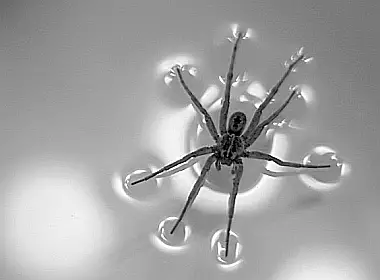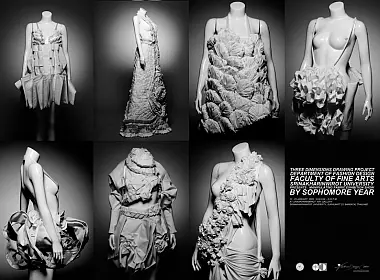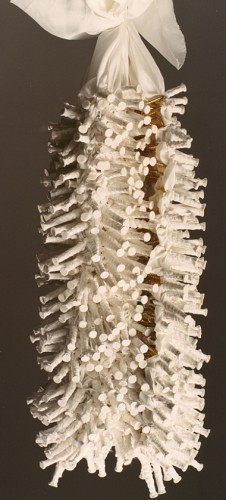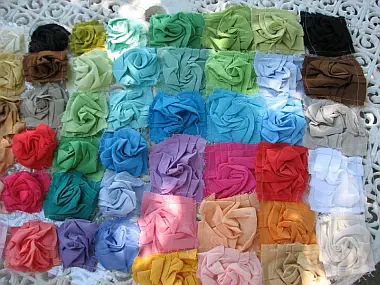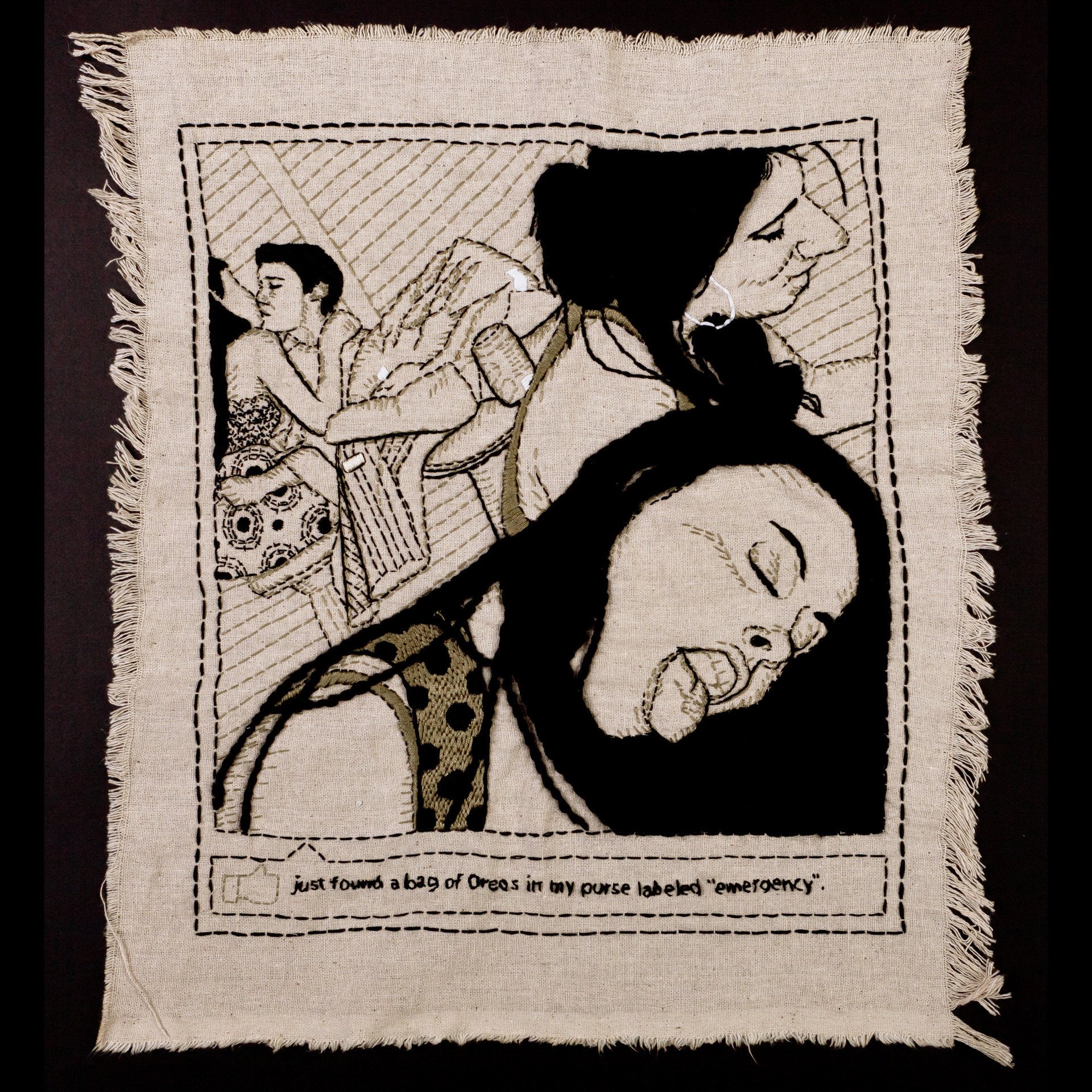Fibristos and Fibristas, is your work feeling uncomfortably horizontal, rolled over and as limp as a soggy tea bag? None of us could imagine a two dimensional world, where flat people slithered around like paper dolls on the pages of a book. None of us could survive without touch, a measured tension that is unique to each person. With our fingers and our eyes we seek relief, intaglio and texture to give us clues to the shape, size and use of a thing. Technically, surface tension is the property of a liquid to be attracted to another liquid without being absorbed into one entity; artistically, it is dimension, contrast, light and shadow.
Surface tension in Textile art can be as simple as using contrasting colour or shape, adding a lump in the form of a found object or as complex as origami and stumpwork. The fabric itself can create the surface tension: it’s not just about embellishment. Changing the form of a textile can give more surface to work on, more chiaroscuro, more room to move the cloth into other dimensions, conceptual forms, and directions. 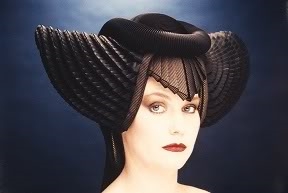
Above, Candace Kling is famous for her pleated and folded avante garde head gear, but has also written a book about the softer side of this sport, “The Artful Ribbon”. 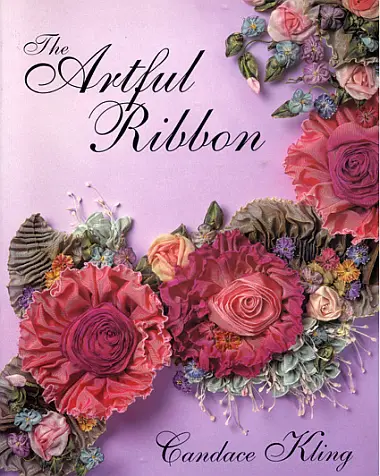
For instant gratification with scrumptious eyecandy, check out work by Thailand’s Srinakharinwirot University fashion grads!
Add it to your clothes, your soft furnishings, your art, your accessories. 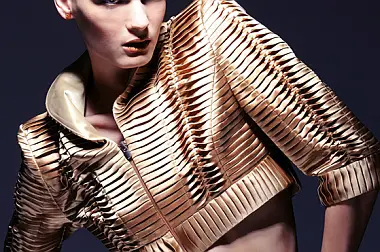 Above: Giorgia Fonyodi, spectacular applications on art to wear. Adjust the tension you normally use and magically fabric can draw up. If it’s a loose weave, you can create holes and ridges. Layer the resulting holed pieces. By hand or machine, pulling tighter will increase dimension, hoop or not. Try elastic thread, couching heavier threads on with a zigzag then pulling, ruching the cloth or folding and twisting then stitching to hold. Build your own shapes using darts and pinches. Hang it off a frame of any sort! Take advantage of mistakes by setting no definite end result, just play with a needle and thread and let the cloth dictate what it will: soft silk, crisp taffeta, velvet, felt, synthetics and utilitarian fabrics like burlap or even plastic are all malleable with the right touch. Then embellish the —- out of it with more stitchery, applique, crochet, whatever turns your crank, simple or complex, abstract, pictorial or conceptual.
Above: Giorgia Fonyodi, spectacular applications on art to wear. Adjust the tension you normally use and magically fabric can draw up. If it’s a loose weave, you can create holes and ridges. Layer the resulting holed pieces. By hand or machine, pulling tighter will increase dimension, hoop or not. Try elastic thread, couching heavier threads on with a zigzag then pulling, ruching the cloth or folding and twisting then stitching to hold. Build your own shapes using darts and pinches. Hang it off a frame of any sort! Take advantage of mistakes by setting no definite end result, just play with a needle and thread and let the cloth dictate what it will: soft silk, crisp taffeta, velvet, felt, synthetics and utilitarian fabrics like burlap or even plastic are all malleable with the right touch. Then embellish the —- out of it with more stitchery, applique, crochet, whatever turns your crank, simple or complex, abstract, pictorial or conceptual. 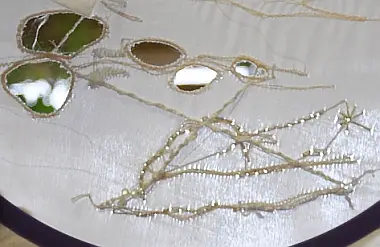 Above, tension combined with thread and needle size can affect appearance and texture as well. Build another hole in the holes!
Above, tension combined with thread and needle size can affect appearance and texture as well. Build another hole in the holes!
Above: Michele Griffiths: shibori and manipulated fabrics. Objects can be left under layers and bound, stuffed or poked through.
Above: Calamity Kim’s gorgeous fabric roses. What if they were beaded and embroidered too? Or stiffened? Stuffed? And below, the more structured version, also on the same site. 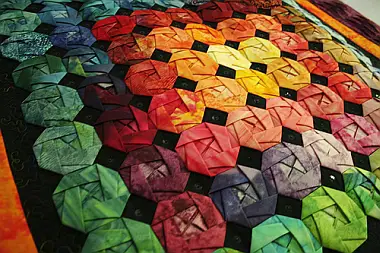
Below, Issey Miyake, famous for making clothes that are truly art and architecturally tensioned. 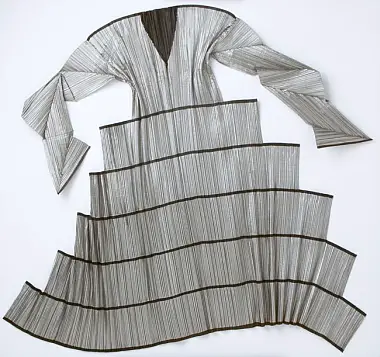
Below, as simple as a skirt with an embellished bottom band! From one of the talented sewists at BurdaStyle. 
Janet Edmonds has used surface tension in her art for years, encompassing boxes to bodices, vessels and hangings. Look what her students learn!!!!!
Tine de Ruysser proves it doesn’t have to be all “natural”fabrics. In fact, polyesters and other synthetics can hold pleats and folds better with heat setting (IF you don’t melt them, but that’s an interesting technique also….). 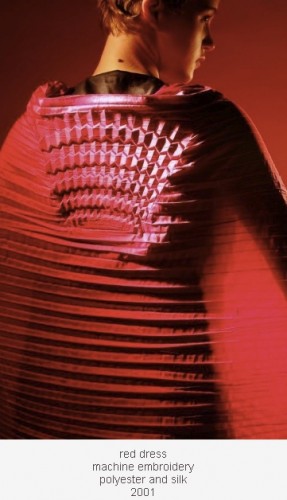
Several excellent books about manipulating fabric are available: a classic in the field is Colette Wolff’s “The Art of Manipulating Fabric”, any “Pattern Magic” book by Tomoko Nakamichi, Kumiko Sudo’s “Fabled Flowers”, “Three Dimensional Embroidery” by Janet Edmonds and a brand new book (for the really dedicated and dextrous) “ShadowFolds” by Jeffrey Rutzky and Chris Palmer. Have a look at Julian Roberts’ “Subtraction Cutting” fashions as well. For true design concept, try Principles of Three-Dimensional Design: Objects, Space and Meaning. Make paper airplanes! There are websites for Kanzashi, Origami (click on the SIDE links, not any underlined words on this site), Furoshiki, cathedral windows, smocking, pleating, stumpwork and other forms of raised stitch. Shibori and Arashi can contribute to dimension if the fabric is not pressed out flat. Check through the archives on this site! Make more paper airplanes!
~~~~~~~~~~~~~~~~~~~~~~~~~~~~~~~~~~~~~~~~~~~
Arlee Barr is a Canadian artist, working primarily with textiles. She describes herself as “curious, eccentric and just a little opinionated“. Surrealist in thought, Fauvist at heart, Arlee likes the eclectic, explorative and absurd. Sprinkled around the interwebs, she can be found hanging around her fantastic blog and shop.



